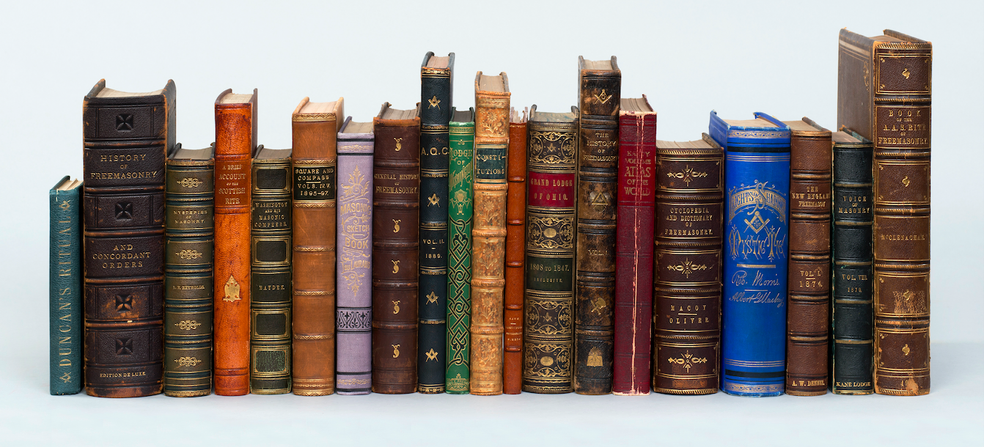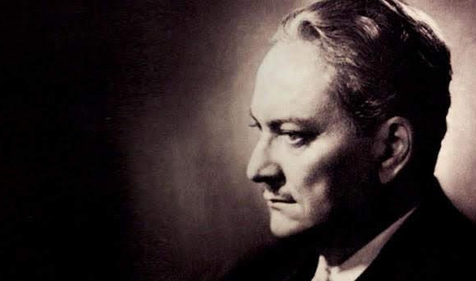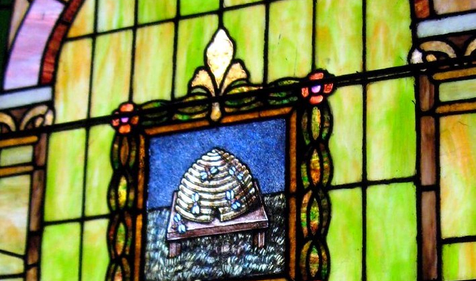These Masonic books are a must-read for any student of Freemasonry and fraternalism.
In the digital age, we’re privileged to have access to more information than ever before. As Freemasons, we’re committed to becoming a better version of ourselves through constant learning and discovery. While there’s much to be gained from our lodge ceremonies, lectures, and discussions with our Brothers, there is a tremendous value in branching out to other sources.
Recently, the Scottish Rite Masonic Museum & Library added 20 incredible new titles to its collection. These books cover everything from Masonic symbolism, the history of Freemasonry in the United States, and what it means to be a Freemason in the modern era. If you’re seeking some inspiration for your reading list, we invite you to learn more about the following titles.
Please note, Freemasons interested in borrowing books from the Van Gorden-Williams Library & Archives Circulating Collection simply need to show proof of current membership by presenting a dues card at the reference desk to sign up. Up to five books may be checked out at a time. Books must be borrowed and returned in person. The loan period is 4 weeks with renewals possible.
- Albert Pike's The Porch and the Middle Chamber: The Book of the Lodge: A Ritual of the Scottish Rite Blue Degrees - By Arturo de Hoyos
Arturo De Hoyos has prepared the only complete and authorized printing of Pike's Scottish Rite ritual for the three Symbolic Degrees. This reprinting of Pike's ritual and "liturgy" (monitor) of the degrees includes a 100-page introduction, appendices, and translations of two early rituals. This is an excellent read for students of Scottish Rite history and Brethren interested in learning about the origins of our ritual.[HR1]
- Approaching the Middle Chamber: The Seven Liberal Arts in Freemasonry & the Western Esoteric Tradition by Jaime Paul Lamb
A well-written, well-researched, and very approachable book that explores how the Seven Liberal Arts and Sciences relate to Freemasonry, as well as other esoteric traditions. Described as an “instant classic, and a must-read for anyone who has tread upon the flight of winding stairs to the middle chamber.”
- The Archetypal Temple and Other Writings on Masonic Esotericism by Jaime Paul Lamb
This collection of essays highlighting Freemasonry's relationship to Western Esotericism is “abounding in unprecedented insights and observations.” Lamb examines Masonic ritual and symbolism from the perspectives of astrology, cosmology, and occult philosophy, illustrating Freemasonry as a living and evolving tradition. Every thought-provoking essay in this collection will increase your understanding of Freemasonry and deepen your connection to the Craft.
- Brought to Light: Contemporary Freemasonry, Meaning, and Society by J. Scott Kenney
After more than 15 years as a Freemason, Brother Kenney decided to apply the methods and theoretical tools of contemporary sociology to study the experience of Modern Freemasons. This illuminating book is the result of Kenney’s extensive study. Drawing on his own experience in the Craft, Kenney also conducted interviews with 121 contemporary Freemasons in Newfoundland and Nova Scotia and researched video footage shot for a feature film on contemporary Freemasonry.
- The Fraternal Atlantic, 1770-1930: Race, Revolution, and Transnationalism in the Worlds of Freemasonry edited by Jessica L. Harland-Jacobs, Jan C. Jansen and Elizabeth Mancke.
The Fraternal Atlantic examines Freemasonry in the eighteenth- and nineteenth-century Atlantic world. Spread across six unique case studies, this scholarly book illustrates how fraternalism played a critical role in imperialism, large-scale migrations, and the socio-political upheavals of revolution that shaped the Atlantic world. Learn how fraternalism offered people opportunities to forge connections across diverse and widely separated parts of the world at a pivotal time in history.
- Freemasonry and the Origins of Latter-day Saints Temple Ordinances by Jeffrey M. Bradshaw
For years researchers have pondered the similarities between the endowment introduced by the Prophet Joseph Smith and Freemasonry. This text makes a thoughtful and intellectual comparison between Latter-day Saint temple worship and modern Freemasonry. As the historian and author Don Bradley writes, Bradshaw “presents Joseph Smith’s revelation of ancient temple ritual and his encounters with Freemasonry not as competing accounts of the origin of Latter-day Saint temple worship but as aspects of one and the same divinely guided process.”
- Freemasonry in the Revolutionary Atlantic World by Hans Schwartz
The 18th century was a time of tremendous political, social, and economic change in the transatlantic world. This recent work by Schwartz sheds new light on the role of Freemasonry in forming international trade networks, organizing resistance to British rule in the American colonies, and the development of Haiti, the wider Caribbean, and the African Atlantic. Any lovers of American history will enjoy this book and its examination of how Freemasonry impacted the Atlantic world and the early American republics.
8.) Freemasonry on the Frontier
This collection of seventeen original papers by leading Masonic researchers and academics was submitted for the 2020 Conference for the Quatuor Coronati Lodge in the United States. These academic texts track the evolution of Freemasonry in America from the original thirteen colonies westward to the Pacific Coast.
9.) Freemasonry: Ritual, Symbols, & History of Secret Society by Mark Stavish
“With exercises and suggested readings, this fascinating exploration is an essential learning tool that will answer questions and shed light on other Masonic mysteries, including initiation and the Lost Word.”
This book is a fascinating read, whether you’re new to Freemasonry or a seasoned Scottish Rite Freemason. Written by author and Freemason Mark Stavish, it examines the philosophy of Masonry and the moral code shared by all Masons. Readers will discover how Masonry's higher degrees, particularly Scottish Rite degrees, were influenced by occult beliefs and practices, and how Masonry is linked to King Solomon, Gothic architecture, and much more.
- Inventing the Future: the 1723 Constitutions by Ric Berman
200 years ago, The Constitutions of the Freemasons – the ‘1723 Constitutions’ – were published in England. In his new book, author Ric Berman explains how the principles of the Enlightenment, including religious tolerance and constitutional democracy, provided the philosophical foundations of modern Freemasonry. This excellent historical tome frames the political and social context of the creation of the constitutions, identifies the main protagonists, and looks at some of the consequences of its creation.
- Masonry Dissected by Samuel Pritchard [expanded and revised commentary by Harry Carr, Arturo de Hoyos, & S. Brent Morris.]
This is a facsimile of the 1730 first edition of Samuel Pritchard’s Masonry Dissected, the first book to claim to reveal the secrets of the third degree. The authors provide a scholarly analysis of the text and its historical context and significance. The material in Masonry Dissected is compared to similar Masonic ritual exposures, and the material is fully indexed.
Unlike other historical texts on Freemasonry, Burt’s book goes beyond the general history and development of Freemasonry in England. By digging deeper into the role of Freemasonry in everyday social and economic life the author highlights just how significant of an economic and societal role Freemasonry played during the Victorian era. Men joined not just to learn the rituals, but for reasons that impacted their families and communities.
- On Being a Masonic Chaplain by Robert J.F. Elsner, Ph.D,DMin
Drawing on his decades of personal experience, Dr. Rob Elsner, 33°, KYGCH, FMR has created a comprehensive step-by-step guide to developing the role of chaplain in any Masonic or appendant body. This includes an examination of the chaplain’s position across lodges, chapters, councils, commanderies, consistories, colleges, Valleys, shrines, forests, and other bodies. With helpful information on how to pray, lead, and listen to Brethren and serve the various communities, this could be an excellent textbook for Masonic chaplain training programs.
- The Path of Freemasonry: The Craft as a Spiritual Practice by Mark Stavish
Freemasonry is a spiritual practice, intended to help men in their efforts of self-improvement. This practical guide leans on the history and meaning of Freemasonry and its symbols to explain how the Craft promotes personal growth. It’s a wonderful read for Masons and non-Masons alike interested in using Freemasonry’s philosophies and lessons to build their inner Temple of Wisdom.
- The Remarkable Life of Lorenzo Dow Chillson by Deanne DeGrandpre
Lorenzo Dow Chillson was a Master Mason, miner, surveyor, and entrepreneur who worked in Nevada, Wyoming, Arizona, and California during the 19th century. This book published by the Ventura Country Historical Society in California tells of his remarkable life throughout the American Southwest.
Brother Chillson was a Master Mason at Washoe Lodge No. 157, in Washoe, Nevada, in 1863 and was a charter member of San Buenaventura Lodge No. 214 in Buenaventura, California in 1870. In the 1890s, he was involved in Freemasonry in Arizona.
- Respectability and Representation: Black Freemasonry, Race, and Early Free Black Leadership by Chernoh M. Sesay, Jr.
This chapter from Black Knowledges/Black Struggles: Essays in Critical Epistemology traces the discourses of African Lodge No. 459, which was the first Black Masonic lodge in the U.S. It takes a critical look at an important yet complex chapter of American history and that of Freemasonry. Sesay posits that as part of the ‘first generation of Black leadership’ in the post-American-Revolution U.S. republic, Black Freemasons faced a ‘paradoxical and pivotal epistemological question’: how Black Americans should argue ‘not just for freedom but also their humanity.’
Arthur Caswell Parker was a controversial and prominent intellectual leader both within and outside tribal circles. In this exhaustively researched biography, Joy Porter explores complex issues of Indian identity, many of which still exist in contemporary American society, including how to straddle both Indian and white worlds, negotiate imposed stereotypes, find ways to transcend those stereotypes and assert an identity rooted in the present rather than in the past.
- Freemasonry by Questions & Answers by Kamel Oussayef
Brother Kamel Oussayef, 33°, a member of Converse Lodge, draws from his years of experience as a researcher and translator for the Scottish Rite, Northern Masonic Jurisdiction to bring Brethren an annotated translation of a 1761 French manuscript. His latest book of published research not only describes the rituals that were used at the conception of Scottish Rite Freemasonry but also reveals the fascinating rituals of the three degrees of a female Masonic lodge. Brothers interested in exploring the history, philosophy, and social politics of Freemasonry and the Enlightenment period will enjoy this scholarly read.
- Freemasonry from the 1st to the 33rd Degree (According to an 1875 French Manuscript Written in Lausanne, Switzerland) by Kamel Oussayef
In Freemasonry From the 1st to the 33rd Degree, Ill. Brother Oussayef provides insight and expertise on the 33 Masonic degrees through annotation of a centuries-old document from an 1875 reunion of several “confederated Supreme Councils” of the Scottish Rite in Switzerland.
The goal of this annotated translation is to help Masons, students, scholars, and historians of Freemasonry understand the evolution of the rituals and garner a deeper appreciation of what they mean to our fraternity.
- The Path Forward: Empowering the Future of Freemasonry by Brother Len Cercone, 32° and Linda R. Patch
The Path Forward: Empowering the Future of Freemasonry offers new, data-driven findings that examine the state and perception of Freemasonry among American men today. The book is designed to support Masonic institutions across the country in carrying forward Freemasonry’s esteemed traditions while meeting the needs of the modern man.
The Path Forward presents:
- How our research findings from 2016 have evolved the positioning and programming of Freemasonry and the Scottish Rite, Northern Masonic Jurisdiction
- New research on Freemasonry and the Scottish Rite examining how attraction to and perception of Freemasonry has changed in the past seven years
- How 3,500 men across the United States respond to messages of Freemasonry and what they value in fraternal organizations
- The “friendship recession” facing American men today
- The need for strong follow-up practices in Freemasonry and how to follow up effectively
- Data-backed recommendations for lodges on who, where, and how to focus their recruitment efforts to grow and sustain a thriving brotherhood
Related Stories
Discover additional Scottish Rite blogs and news on this topic.
-
Manly P. Hall: Philosopher, Mystic, and Freemason
Famous Masons
Read More about Manly P. Hall: Philosopher, Mystic, and Freemason
-
What Does the Beehive Mean in Freemasonry?
Degrees
Read More about What Does the Beehive Mean in Freemasonry?
-
Was Robert Burns a Freemason?
Famous Masons
Read More about Was Robert Burns a Freemason?



